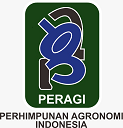Effect of Different Edible Coatings on Postharvest Quality of Mandarin Orange (Citrus reticulata Blanco)
Abstract
Keywords
Full Text:
PDFReferences
Ahmad, M.S., Thakur, K.S., & Siddiqui, M.W. (2013). Postharvest treatments for preserving quality of ‘Kinnow’ fruit under different storage conditions. Advances in Horticultural Science, 27(4): 152–158.
AOAC. (2005). Official Methods of Analysis. Association of Official Analytical Chemists, Washington DC, USA.
Bhattarai, B.P., & Shah, R. (2017). Effect of Different Packaging Materials on Post-Harvest Status of Mandarin (Citrus reticuleta Blanco). Journal of Horticulture, 4: 218. DOI: 10.4172/2376-0354.1000218.
Bhattarai, R.R., Rijal, R.K., & Mishra, P. (2013). Post-harvest losses in mandarin orange: A case study of Dhankuta District Nepal. African Journal of Agricultural Research, 8(9): 763–767. DOI: https://doi.org/10.5897/AJAR12.1766.
Bisen, A., Pandey, S., & Patel, N. (2012). Effect of skin coatings on prolonging shelflife of kagzi lime fruits (Citrus aurantifolia Swingle). Journal of Food Science and Technology, 49(6): 753–759. DOI: 10.1007/s13197-010-0214-y.
Deka, B.C., Sharma, S., & Borah, S.C. (2006). Postharvest management practices for shelf life extension of Khasi mandarin. Indian. Journal of Horticulture, 63(3): 251–255.
Dhall, R.K. (2013). Advances in edible coatings for fresh fruits and vegetables: A review. Critical Reviews in Food and Nutrition, 53: 435–450. DOI: 10.1080/10408398.2010.541568.
Gomez, K.A., & Gomez, A.A. (1984). Statistical procedures for agricultural research. International Rice Research Institute, Laguna, Phillipines.
Jholgiker, P., & Reddy, B. (2007). Effect of different surface coating material on postharvest physiology of (Annona squamosa L.) fruits under ambient and zero energy cool chamber storage. Indian Journal of Horticulture, 64(1): 41–44.
Joshi, P., Ojha, B.R., and Kafle, A. (2020). Effect of Different Postharvest Treatments on Prolonging Shelf life of Citrus reticulata Blanco. Nepalese Horticulture, 14: 1–8. DOI: https://doi.org/10.3126/nh.v14i1.30603.
Kader, A. (2005). Increasing food availability and reducing postharvest losses of fresh produce. Acta Horticulturae, 682: 2169–2176. DOI: 10.17660/ActaHortic.2005.682.296.
Khorram, F., Ramezanian, A., Mohammad, S., & Hosseini, H. (2017). Effect of different edible coatings on postharvest quality of ‘Kinnow’ mandarin. Journal of Food Measurement and Characterization, 11: 1827–1833. DOI: https://doi.org/10.1007/s11694-017-9564-8.
Ladaniya, M.S., Singh, S., & Mahalle, B. (2005). Sub-optimum low temperature storage of ‘Nagpur’mandarin as influenced by wax coating and intermittent warming. Indian Journal of Horticulture, 62(1): 1–7.
Mahfoudhi, N., Chouaibi, M., & Hamdi, S. (2014). Effectiveness of almond gum trees exudate as a novel edible coating for improving postharvest quality of tomato (Solanum lycopersicum L.) fruits. Food Science and Technology International, 20(1): 33–43. DOI: 10.1177/1082013212469617.
MoALD. (2020). Statistical Information on Nepalese Agriculture, Ministry of Agriculture and Livestock Development (MoALD), Singh Durbar, Kathmandu, Nepal.
Nath, A., Deka, B.C., Singh, A., Patel, R.K., Paul, D., Mishra, L.K., & Ojha, H. (2011). Extension of shelf life of pear fruits using different packaging materials. Journal of Food Science and Technology, 49(5): 556–563. DOI: 10.1007/s13197-011-0305-4.
Navarro-Tarazaga, M.L.L., & Perez-Gago, M.B. (2006). Effect of edible coatings on quality of mandarins cv. Clemenules. Proceedings of the Florida State Horticultural Society. 119: 350–352.
Pandey, G., Basnet, S., Pant, B., Bhattarai, K., Gyawali, B., & Tiwari, A. (2017). An Analysis of Vegetables and Fruits Production Scenario in Nepal. Asian Research Journal of Agriculture, 6(3): 1–10. DOI: 10.9734/ARJA/2017/36442.
Paudel, A., Baral, D., Acharya, H., & Dhital, M. (2019). Effect of Post-Harvest Dipping and Various Packaging Materials on Quality Traits of Mandarin (Citrus reticulata Blanco.). Acta Chemica Malaysia, 3(2): 14–20. DOI: 10.2478/acmy-2019-0007.
Pokhrel, C.N. (2011). Analysis of market chain of mandarin in Nepal: A case of Lamjung district. A research project submitted to Van Hall Larenstein University of Applied Sciences.
Purbiati, T., & Supriyanto, A. (2013). Effect of harvesting methods and storage temperature on shelf life of mandarin fruit cultivar ‘Soe’ from East Nusa Tenggara, Indonesia. Acta Horticulture, 989:149–152.
Rokaya, P.R., Baral, D.R., Gautam, D.M., Shrestha, A.J., & Paudyal, K.P. (2016). Effect of Postharvest Treatments on Quality and Shelf Life of Mandarin (Citrus reticulata Blanco). American Journal of Plant Sciences, 7: 1098–1105. DOI: http://dx.doi.org/10.4236/ajps.2016.77105.
Sahu, B. (2016). Effect of different postharvest treatments on prolonging shelflife of sugar apple (Annona squamosa L.). M.Sc. Thesis, Indira Gandhi Krishi Vishwavidyalya, India.
Shahid, M.N., & Abbasi, N.A. (2011). Effect of bee wax coatings on physiological changes in fruits of sweet orange cv. “Blood Red.” Sarhad Journal of Agriculture, 27(3): 385–394.
Thapa, S., Sapkota, S., & Adhikari, D. (2020). Effect of different postharvest treatments on prolonging shelf life and maintaining quality of sweet orange (Citrus sinensis Osbeck.). Sustainability in Food and Agriculture, 1(2): 69–75. DOI: http://doi.org/10.26480/sfna.02.2020.69.75.
Vanoli, M., Grassi, M., Buccheri, M., & Rizzolo, A. (2015). Influence of edible coatings on postharvest physiology and quality of honeydew melon fruit (Cucumis melo L. inodorus). Advances in Horticultural Science, 29: 65–74. DOI: 10.13128/ahs-22683.
Yadav, M., Kumar, N., Singh, D.B., & Singh, G.K. (2010). Effect of Postharvest Treatments on Shelf Life and Quality of Kinnow Mandarin. Indian Journal of Horticulture, 67: 243–248.
Refbacks
- There are currently no refbacks.



























